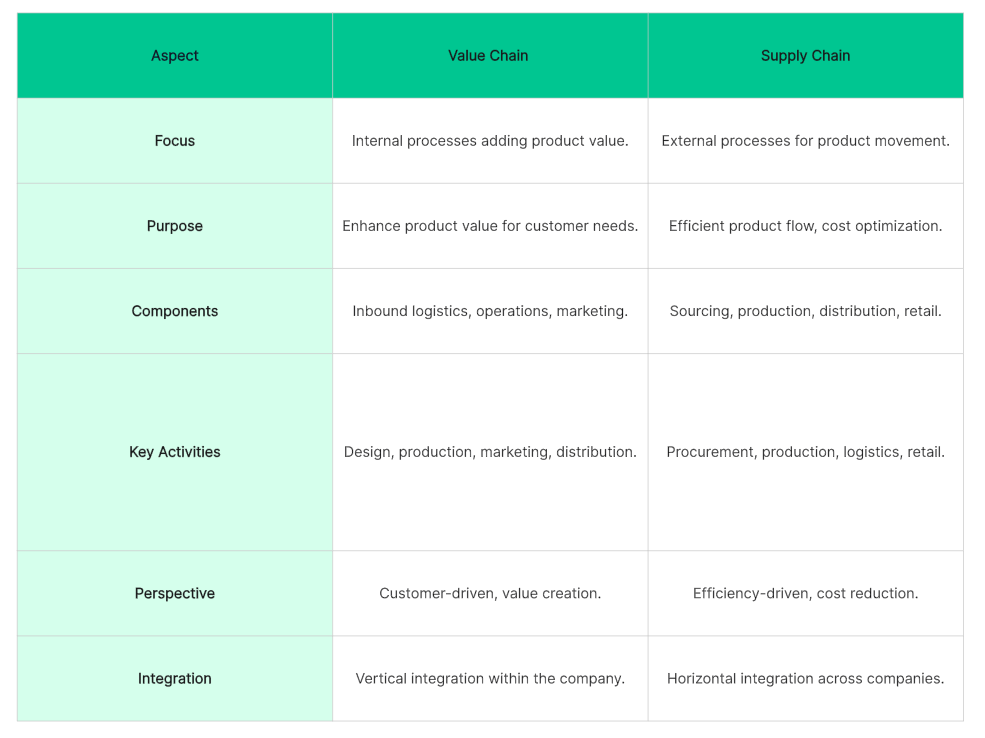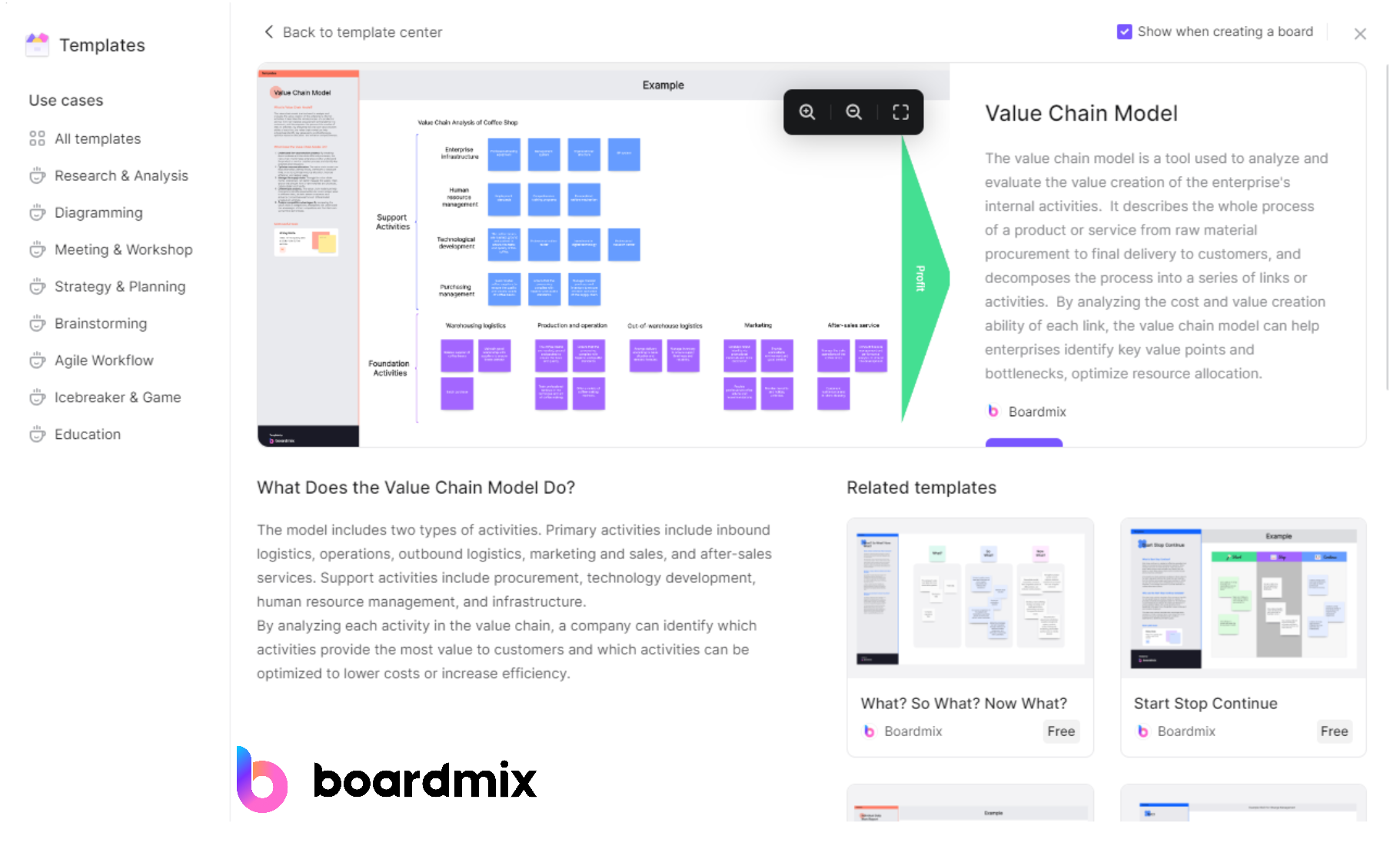In the dynamic landscape of business and commerce, the terms "value chain" and "supply chain" are frequently used but are often misunderstood or used interchangeably. While both concepts are integral to the functioning of a business, they represent distinct processes within the larger framework of operations. This article aims to unravel the differences between value chain and supply chain, emphasizing their unique roles and contributions to organizational success.
Part 1. Supply Chain Overview
The supply chain refers to the entire process involved in getting a product or service from its raw material stage to the end consumer. It encompasses the flow of goods, information, and finances from the initial production to the final consumption. The supply chain involves various stages, including procurement of raw materials, manufacturing, distribution, logistics, and retail.

image from Wikipedia
Part 2. Key Components of the Supply Chain
1. Procurement and Sourcing:
Involves the acquisition of raw materials and components required for production.
2. Manufacturing:
The transformation of raw materials into finished goods through various production processes.
3. Distribution and Logistics:
The movement and storage of finished goods from manufacturing plants to distribution centers and, eventually, to retailers or directly to consumers.
4. Retail:
The final stage where consumers purchase and receive the products.
Part 3. Value Chain Overview
In contrast, the value chain focuses on the specific activities and processes that create value for the customer. It extends beyond the boundaries of a single organization and encompasses the entire value-adding process from conception to consumption. The value chain includes both primary and support activities that contribute to the development, production, and delivery of a product or service.

Part 4. Key Components of the Value Chain
1. Primary Activitie
Inbound Logistics: Involves receiving, storing, and distributing inputs.
Operations: The process of transforming inputs into finished products.
Outbound Logistics: Activities related to the distribution of the final product.
Marketing and Sales: Promoting and selling the product.
Service: Providing after-sales support and service.
2. Support Activities
Infrastructure: Management, planning, finance, and quality control.
Technology Development: Research and development, process automation, and innovation.
Human Resource Management: Recruitment, training, and development of personnel.
Procurement: Acquiring inputs needed for the primary activities.
Part 5. What Is Difference Between Value Chain and Supply Chain?
The main difference between the value chain and the supply chain lies in their focus and scope within the business operations:
1. Focus
Supply Chain: The supply chain is primarily concerned with the logistics and processes involved in the movement of goods and services from the initial production stages to the end consumer. It involves procurement, manufacturing, distribution, and retail.
Value Chain: The value chain, on the other hand, focuses on the specific activities and processes that create value for the customer. It encompasses a broader set of activities, both primary and support, that contribute to the development, production, and delivery of a product or service.
2. Scope
Supply Chain: The supply chain covers the entire process of product or service delivery, starting from the acquisition of raw materials to the final consumption by the end customer. It involves various external partners, suppliers, and distributors.
Value Chain: The value chain is an internal framework that emphasizes the activities within an organization. It examines how each internal process adds value to the final product or service.
3. Customer Orientation:
Supply Chain: The supply chain is more oriented toward efficiency and cost-effectiveness in the movement of goods. It ensures that products are delivered to the right place at the right time.
Value Chain: The value chain is customer-centric, focusing on creating and enhancing value for the customer. It considers aspects such as product features, branding, and customer service that contribute to a competitive advantage.
4. Components:
Supply Chain: Involves procurement, manufacturing, logistics, distribution, and retail.
Value Chain: Involves primary activities (inbound logistics, operations, outbound logistics, marketing and sales, and service) and support activities (infrastructure, technology development, human resource management, and procurement).
5. Internal vs. External Focus
Supply Chain: Primarily deals with external partners, suppliers, and distributors, emphasizing the coordination of activities outside the organization.
Value Chain: Focuses on internal processes, highlighting how an organization's activities contribute to its competitive advantage.
In essence, while the supply chain is a critical part of the broader value chain, the value chain provides a more comprehensive view by considering all the activities that contribute to the creation and delivery of value to the customer. Both concepts are essential for organizations to understand and manage effectively to achieve overall efficiency and competitiveness in the marketplace.
Part 6. Best Tool for Value Chain Analysis and Supply Chain Analysis
Boardmix is a cutting-edge online whiteboard solution designed to revolutionize the way businesses conduct value chain and supply chain analysis. With an extensive range of drawing templates, Boardmix enables users to visually map out, analyze, and optimize their entire value chain from inbound logistics to customer service. Similarly, for supply chain analysis, Boardmix provides a collaborative platform where teams can identify bottlenecks, streamline processes, and strategize improvements in real-time. Unlike traditional methods that are often time-consuming and complex, Boardmix simplifies these critical business operations into an intuitive and interactive experience.

Key features of Boardmix:
- Collaborative Workspace: Boardmix offers a real-time collaborative workspace where teams can brainstorm, strategize, and work together seamlessly, regardless of their geographical location.
- Extensive Drawing Templates: With a wide variety of pre-designed templates, Boardmix makes it easy for users to map out complex processes like value chain and supply chain analysis.
- Real-Time Updates: Changes made on Boardmix are updated in real time, ensuring all team members have access to the most current information at all times.
- Interactive Experience: Boardmix's intuitive interface allows users to interact with their diagrams and charts, making the process of analysis more engaging and effective.
- Scalability: Whether you're a small business or a large corporation, Boardmix is designed to scale with your needs, making it suitable for teams of all sizes.
Conclusion
In summary, while the supply chain and value chain are interrelated and interconnected, they serve different purposes in the business ecosystem. Organizations must recognize and strategically manage both chains to optimize their operational efficiency, enhance customer value, and maintain a competitive edge in the global marketplace. A comprehensive understanding of these concepts is essential for businesses seeking to thrive in today's complex and competitive business environment.
Experience the future of value chain and supply chain analysis with Boardmix, a powerful online whiteboard tool designed to streamline your business processes. With our extensive range of drawing templates and real-time collaborative workspace, you can visualize, strategize, and optimize like never before. Don't just take our word for it - try Boardmix today and see how it can transform your business operations.







